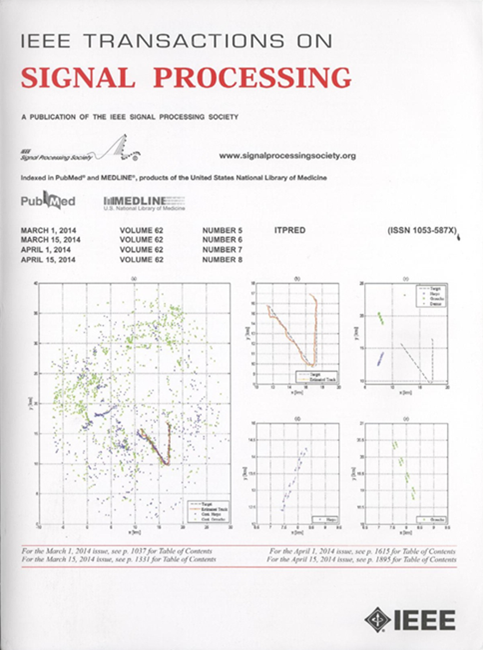Simplicial Vector Autoregressive Models
IF 4.6
2区 工程技术
Q1 ENGINEERING, ELECTRICAL & ELECTRONIC
引用次数: 0
Abstract
The vector autoregressive (VAR) model is extensively employed for modelling dynamic processes, yet its scalability is challenged by an overwhelming growth in parameters when dealing with several hundred time series. To overcome this issue, data relations can be leveraged as inductive priors to tackle the curse of dimensionality while still effectively modelling the time series. In this paper, we study the role of simplicial complexes as inductive biases when modelling time series defined on higher-order network structures such as edges and triangles. First, we propose two simplicial VAR models: one that models time series defined on a single simplicial level, such as edge flows, and another that jointly models multiple time series defined across different simplicial levels, ultimately capturing their spatio-temporal interdependencies. The proposed models use simplicial convolutional filters to facilitate parameter sharing and capture structure-aware spatio-temporal dependencies in a multiresolution manner. Second, we develop a joint simplicial-temporal Fourier transform to study the spectral characteristics of the models, depicting them as simplicial-temporal filters. Third, targeting streaming signals, we develop an online algorithm for learning simplicial VAR models. We prove this online learner attains a sublinear dynamic regret bound, ensuring convergence under reasonable assumptions. Finally, we corroborate the proposed approach through experiments on synthetic networks, water distribution networks, and collaborating agents. Our findings show that the proposed models attain competitive signal modelling accuracy with orders of magnitude fewer parameters than the state-of-the-art alternatives.简单向量自回归模型
向量自回归(VAR)模型被广泛用于动态过程建模,但当处理数百个时间序列时,其可扩展性受到参数压倒性增长的挑战。为了克服这个问题,可以利用数据关系作为归纳先验来解决维度的诅咒,同时仍然有效地建模时间序列。在本文中,我们研究了在高阶网络结构(如边和三角形)上定义的时间序列建模时,简单复合体作为归纳偏差的作用。首先,我们提出了两种简单VAR模型:一种模型是在单个简单层次上定义的时间序列,如边缘流;另一种模型是在不同的简单层次上定义的多个时间序列,最终捕获它们的时空相互依赖性。所提出的模型使用简单卷积滤波器来促进参数共享,并以多分辨率方式捕获结构感知的时空依赖关系。其次,我们开发了一个联合的简单-时间傅里叶变换来研究模型的光谱特征,将它们描述为简单-时间滤波器。第三,针对流信号,我们开发了一种学习简单VAR模型的在线算法。我们证明了该在线学习器在合理的假设下达到了次线性动态后悔界,保证了收敛性。最后,我们通过在合成网络、配水网络和协作代理上的实验来证实所提出的方法。我们的研究结果表明,所提出的模型获得具有竞争力的信号建模精度与数量级较少的参数比最先进的替代品。
本文章由计算机程序翻译,如有差异,请以英文原文为准。
求助全文
约1分钟内获得全文
求助全文
来源期刊

IEEE Transactions on Signal Processing
工程技术-工程:电子与电气
CiteScore
11.20
自引率
9.30%
发文量
310
审稿时长
3.0 months
期刊介绍:
The IEEE Transactions on Signal Processing covers novel theory, algorithms, performance analyses and applications of techniques for the processing, understanding, learning, retrieval, mining, and extraction of information from signals. The term “signal” includes, among others, audio, video, speech, image, communication, geophysical, sonar, radar, medical and musical signals. Examples of topics of interest include, but are not limited to, information processing and the theory and application of filtering, coding, transmitting, estimating, detecting, analyzing, recognizing, synthesizing, recording, and reproducing signals.
 求助内容:
求助内容: 应助结果提醒方式:
应助结果提醒方式:


